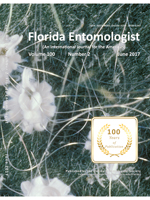The oriental fruit fly, Bactrocera dorsalis (Hendel) (Diptera: Tephritidae), is one of the most important economic pests in tropical and subtropical areas of the world, where it causes serious damage to fruit production. This study aimed to investigate the criteria for dividing the instars of B. dorsalis, which will be fundamental for the control and forecasting of development rates, as well as the development of efficient control measures for B. dorsalis. Five morphological variables, including the body length, the length and width of mouth hooks, and the length and width of the pharyngeal sclerite of the larvae, were measured. The Crosby growth rule was used in determining that B. dorsalis has 3 instars. The length of the pharyngeal sclerite is the best morphological variable for distinguishing the instars of B. dorsalis, whereas the length and the width of mouth hooks and the width of the pharyngeal sclerite can be used as additional characteristics. There was an overlap in the body length between the adjacent instars of B. dorsalis, and therefore body length cannot be used to separate the instars accurately.
How to translate text using browser tools
1 June 2017
Determination of Instars of Bactrocera dorsalis (Diptera: Tephritidae)
Yan Shi,
Lei Wang,
Wei Dou,
Hong-Bo Jiang,
Dan-Dan Wei,
Dong Wei,
Jin-Zhi Niu,
Jin-Jun Wang

Florida Entomologist
Vol. 100 • No. 2
June 2017
Vol. 100 • No. 2
June 2017
estructura de esclerita
instar
mosca de la fruta oriental
oriental fruit fly
sclerite structure




